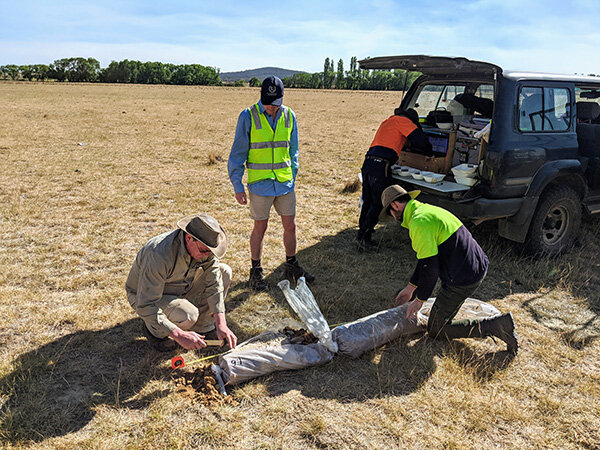Soil scientist Wayne Cook inspecting soil sample at Duralla, with TMI’s James Diack and work experience student James Hunt.
#WorldSoilDay
Over the last two weeks we’ve had a professional drill rig unit onsite from Terratest extracting soil core samples as part of our baseline monitoring work in the Mulloon Community Landscape Rehydration Project. The drill rig work was overseen by TMI’s Soil Hydrologist Tony Bernardi and used a sonic vibration method to extract the soil cores, which were then expertly handled by Soil Scientist Wayne Cook.
The drill unit took samples down to as deep as 30 metres to identify the underlying bedrock. The soil cores revealed an amazing look back through history of alluvial and aeolian processes that have formed the floodplain soils of today. They encountered soils of varying depth and characteristics, such as slicing through clay and rich organic soils, and at other times old river rocks, gravel and sand. Most fascinating were the seams of sand (and/or gravel) running through the landscape at different levels. These sandy layers often have a clay layer underneath or above, indicative of multiple aquifers, and act like underground rivers or veins in the ground, allowing water to move through the landscape. This allows water to be distributed and stored in these clay layers, effectively ‘banking’ water in the soil for use during drier times.
Soon these drill holes will have piezometers installed in them to allow for ongoing monitoring of groundwater depth and quality throughout the MCLRP.
